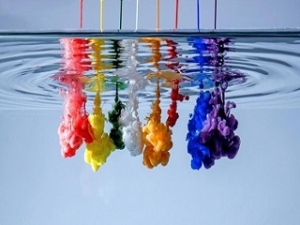
Color fastness is a term used in the dyeing of textiles; We can define color stability as follows: having a color that does not fade or fade with washing. Textile fabrics have many properties, of which color stability is one of the most important. Color fastness is one of the characteristics that allows colored textiles to retain their various properties even in the face of destructive conditions such as light exposure and laundry.
One of the main reasons for consumers’ complaints about dyed textiles is their unacceptable color stability. Dyed fabrics behave differently when exposed to different conditions such as rubbing, washing, sweating, and exposure to light (while using textiles or clothing). The color of the fabrics may be quite consistent in some situations, but they may show very poor color stability in other conditions. Therefore, the fabric should be tested based on its final application.
Different types of fabric color fastness
There are several tests to check the color fastness of the fabric. The most important tests to check the color fastness of the fabric are:
– Color fastness against rubbing
– Color fastness against washing
– Color fastness against light
– Color fastness against perspiration
– Color fastness to sublimation
– Color fastness against water
– Color fastness against sea water
– Color fastness against hot pressure
– Color fastness against chlorinated water
Color fastness against rubbing
This test evaluates the amount of dye that is transferred from the dyed sample to the white cloth under certain rubbing conditions. This is done using scaling equipment that can be operated manually or by motor. There are two main tests to determine the rubbing effect; One of these methods is BS EN ISO-105-X12, while in the second method, the AATCC-8 method uses an odometer. In the BS EN ISO-105-X12 test method, the dimensions of the dyed fabric should not be less than 50 by 140 mm. However, in the AATCC-8 test method, the dimensions of the sample must be at least 50 by 130 mm.
The AATCC has also developed another method, the AATCC-116 Vertical Rotary Detector, which is used for smaller specimens and printed fabrics. In this experiment, the dyed cloth sample is locked on the base of the dirt meter, then a white cloth measuring 5 by 5 cm is mounted on a finger and rubbed on the dyed cloth. A finger is rubbed on the dyed cloth at a speed of 10 revolutions per second. The white cloth is then evaluated on the removed finger. In this experiment, grading is done on a scale of 1 to 5. The method of testing the color fastness of a wet rub is quite similar to the dry method, which means that the test has nothing to do with whether the cloth is wet from the beginning. The strength of the fabric in terms of fluid absorption must be 65%, otherwise significant changes may be reported. This test method can be used to determine the degree of rubbing for a variety of dyed fabrics and fabrics that are processed after dyeing.
Color fastness against washing
This method is used to evaluate the resistance of dyed fabrics to washing with soap and water, or water and detergents. There are many main and secondary methods for evaluating the color fastness of dyed fabric against washing, because the washing conditions vary from country to country and from consumer to consumer. Therefore, various tests have been developed in this field. The following are two main methods that have been approved by many international organizations. The first test relates to the textile test against color stability BS EN ISO 105-C06: 2010 (Section C06 color fastness against household and commercial washing). The second test is the color fastness test against home and commercial AATCC Test Method 2003-2006. There are various methods based on ISO standard methods for evaluating color stability during washing, which have been developed in the form of methods C01 to C06. Methods C01 to C06 differ in soap percentage, temperature, wash time and wash level. In the BS EN ISO 105-C06: 2010 test method, dyed fabrics must have dimensions of at least 10 by 4 cm and be sewn together with standard multi-fiber strips. There are two types of multi-fiber tapes, each containing six different types of fibers; The DW type is wool, while the TV type is non-wool. Fibers with unstable dyes can be evaluated by compressing the samples by laying and then sewing their spacing with multi-fiber strips. For testing, colored yarns can be turned into knitting fabric, or the above method, which is for loose fibers, can be repeated for yarns. The sample is then washed in a washing machine (at a speed of 40 rpm) based on one of the conditions in the table above. The washing solution used in this experiment is prepared by dissolving 4 grams of detergent per liter of water. The reference detergents used in this experiment may be AATCC 1993, WOB (without optical clarifier) or ECE (European Institute for Color Stability) in combination with phosphates.
Abrasion is performed on dyed fabrics with a small amount of solution and using a large number of steel balls. Grayscale grading for color change and color stability can be provided using the corresponding gray scales. The samples can also be ranked on a scale of 1 to 5. Method C06 can be used for all natural and artificial colors. The washing machine used in this method is similar to the ISO C06 standard washing machine, but the sample size and washing conditions will be different in this test.
Color fastness against light
This test is performed to evaluate the fading of the fabric when the sample is kept under a specific light source. During this test, the test specimens are exposed to light for a specified period of time in terms of light source, temperature and humidity at the customer’s request, then compared with standard specimens. The blue scale is used to determine the amount of color change. This test is very important for paint manufacturers, dyeing units and retailers. Some products such as carpets, curtains and home appliances should have very good color fastness against light due to functional requirements.
Textile color fastness test, BS EN ISO 105- B02: 2014 ;: Color fastness against artificial light: Color test on xenon arc and AATCC Test Method 16. Usually the light spectrum of a xenon arc-based light source is similar to that of daylight. That is why it is often used. In addition, an effective filter between the lamp and the sample should be used to control the light intensity. These variables can easily lead to significant changes in the gradation of color stability against light. Therefore, when announcing the test result, the conditions to which the sample is exposed must be fully explained. Tested samples and standard reference of blue wool are stored in a special light source and in standard conditions. According to the standard, some of the samples are partially covered and the rest of the samples are exposed to a special light source. Then the samples that were exposed to light, the ones that were not exposed to light, and the standard samples that all have the same color are compared and the sample is graded based on the mental results. In this ranking, scale 1 (lowest) and scale 8 (highest) have points. American and European scales use two different sets of standard references. The rating on the European scale is from 1 to 8, while the rating on the American scale is from L2 to L9. It should be noted that these scales can not be converted to each other, and when grading textiles, the scale on which the textile is graded should be mentioned.
Color fastness against perspiration
This test is performed to assess the discoloration of the fabric during sweating. In this experiment, the test specimens are immersed in a solution consisting mainly of histidine. The sample is then placed in a perspirometer and treated with histidine solution; A standard sample is also dried separately. The gray scale can be used to determine discoloration and staining. Two test methods that have received a lot of attention in this field are AATCC Test Method 15 and BS EN ISO 105-E04. In both experiments, perspiration was dissolved based on the hash. In alkaline solution, soluble hash is maintained at level 8 using NaOH; Other compounds in this solution include 0.5 g of histidine monohydrochloride monohydrate, 5 g of sodium chloride and 2.5 g of sodium hydrogen phosphate per liter. Acid solution pH should be maintained at level 5.5. Other ingredients in this solution are like alkaline solution.
By immersing the sample in the solution for half an hour at room temperature, the fabric sample is completely soaked in the acidic solution (or the solution at the base of the desired foundation) and the sample has a solution ratio of 50: 1. To remove excess solution, the sample is cleaned with two glass rods and then placed at the recommended pressure of 12.5 kPa between two pressure gauge plates. Next, the sample is dried in an oven at 37 ° C for 4 hours. Finally, the sample is graded using the gray scale.
Color fastness to sublimation
The color fastness of a painted product is not only affected by washing, water or rubbing; It is also affected by heat in various conditions such as pressure, dry heat or heat and humidity. Some pigments are sensitive to heat and therefore may fade or fade due to heat. This test is performed to evaluate the paint’s resistance to the effects of dry heat, regardless of whether it is pressed or ironed. In general, there are two methods for evaluating the color fastness against dry heat: (1) color fastness test against dry heat, ISO 105 – P01 (excluding presses) and (2) AATCC Test Method 117-2004 – color fastness at Heat equal: dry (except press). These methods can be used for different types of fabrics and are based on the stability of the fibers at different temperatures; In addition, the color fastness of the paint may be affected by the chemicals used during dyeing, printing, chemical processing and physical factors involved in discoloration and staining. In these tests, the unpainted fabric attached to the test specimens is exposed to heat and graded on a gray scale.
A test sample of the test sample is processed for 30 seconds at a specified temperature and pressure. The three temperature options for the experiment are 2.150, 2.180, and 2.210 ° C; Also, the temperature at which the sample is exposed must be stated, because changing the temperature can significantly change the results. During the test, a pressure of 1.4 kPa is applied to the sample. Finally, the treated samples are evaluated and ranked using the gray scale in terms of color change and staining on the adjacent fabric.

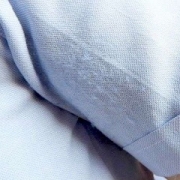
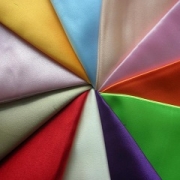
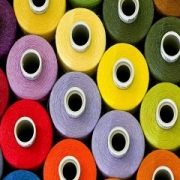


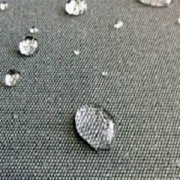

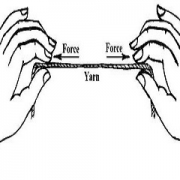



Leave a Reply
Want to join the discussion?Feel free to contribute!